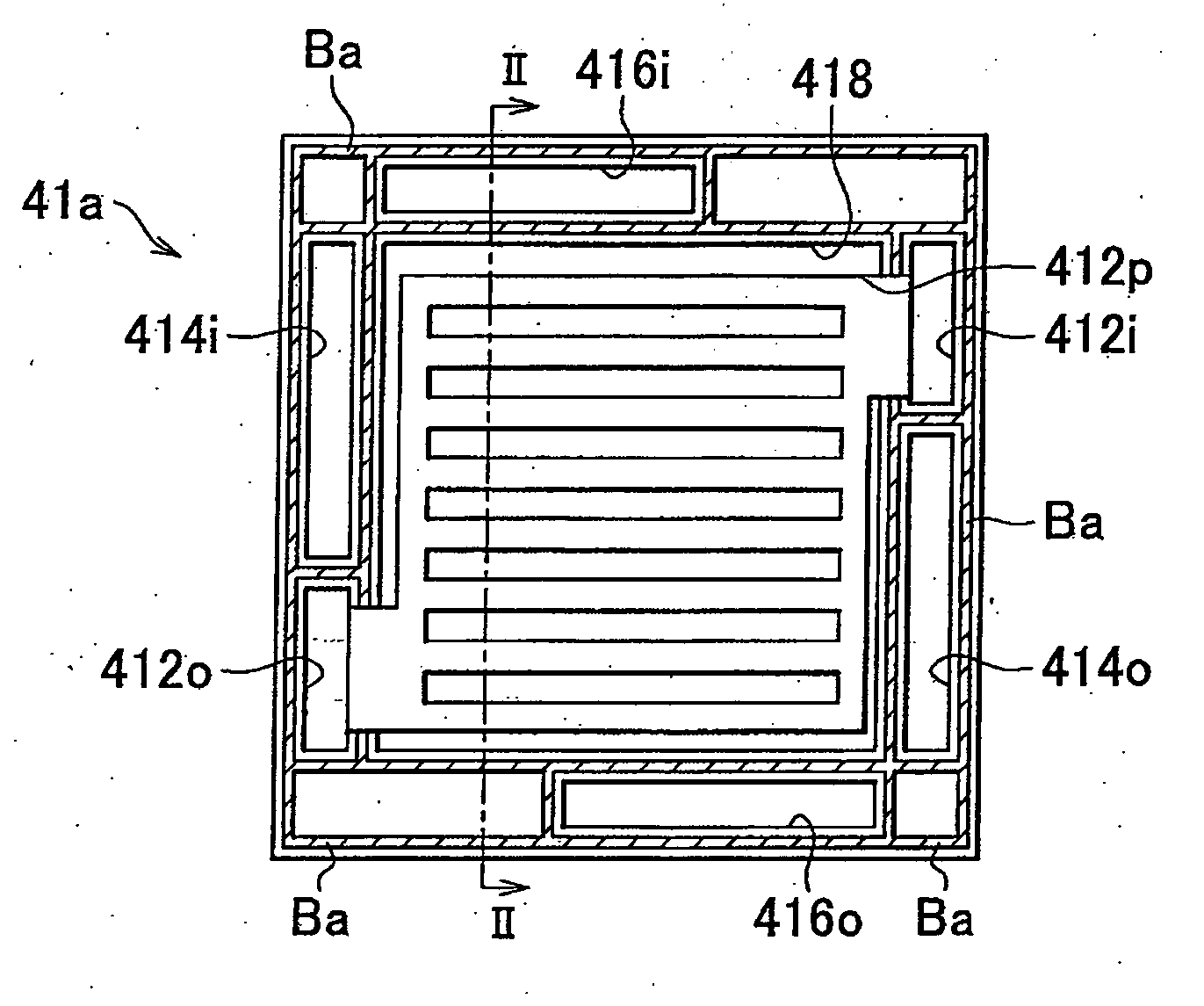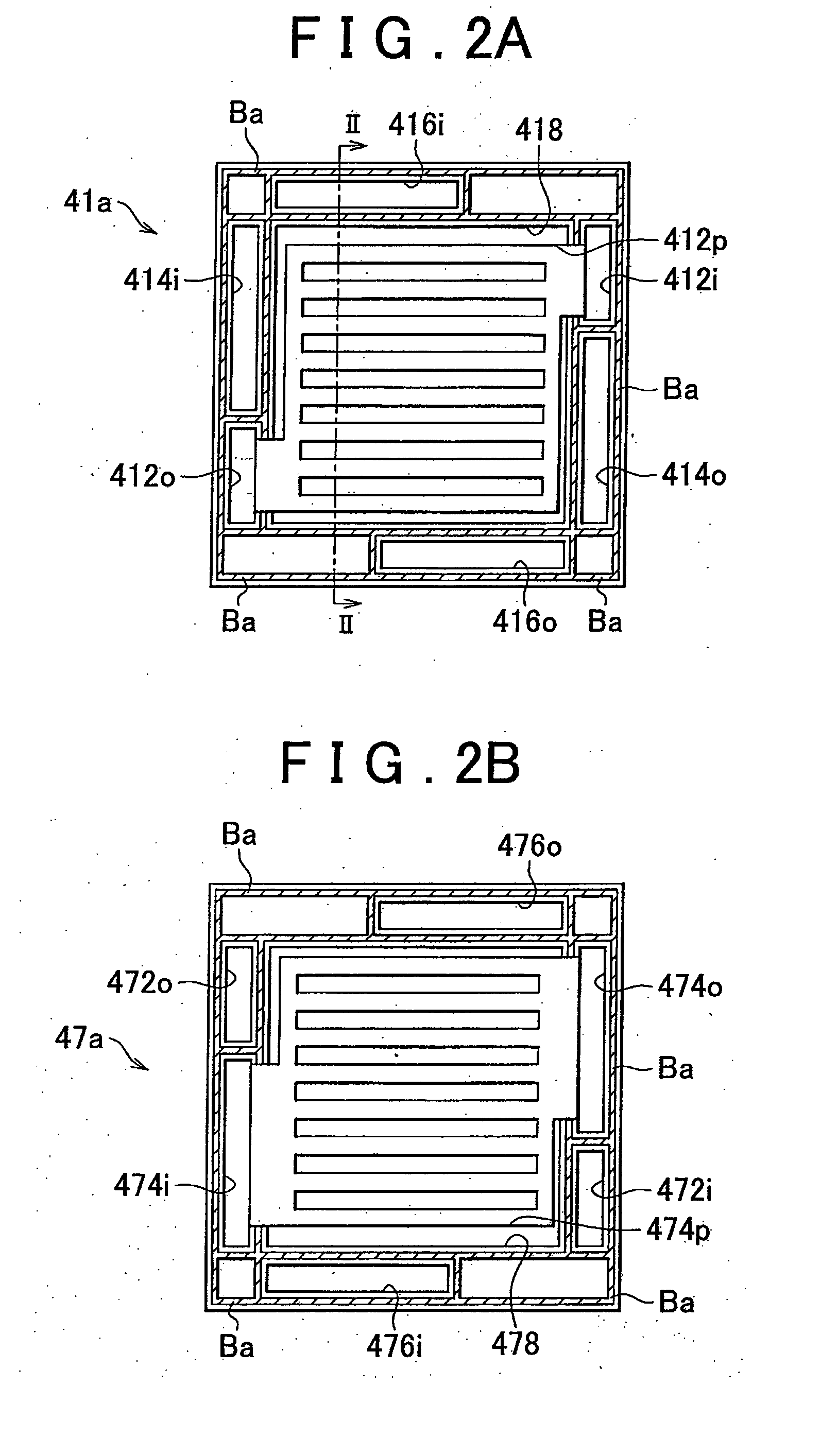Fuel cell
a fuel cell and cell technology, applied in the field of fuel cells, can solve the problems of affecting the accuracy of fuel cell assembly, and the cracking of separation devices at locations, and achieve the effect of high accuracy and easy assembly
- Summary
- Abstract
- Description
- Claims
- Application Information
AI Technical Summary
Benefits of technology
Problems solved by technology
Method used
Image
Examples
first embodiment
[0046]As in the case of the first embodiment, when a pressurizing load is applied to the anode side separator 41b and the cathode side separator 47b with an MEA 48 interposed therebetween so that the lower edge of the anode side separator 41b and the upper edge of the cathode side separator 47b are bonded to each other and the upper edge of the anode side separator 41b and the lower edge of the cathode side separator 47b are bonded to each other as shown in FIG. 4A and FIG. 4B and the adhesive Bb is cured, an integrated unit cell 40b is formed (FIG. 4C). Then, the adhesive Bb applied around the receiving parts 418 and 478 and around the through-holes functions as a seal member for preventing leakage of hydrogen, air, and coolant. The adhesive Bb applied linearly along the upper and lower edges of the separators 41b and 47b functions as a support member for supporting the fastening load described before on the edges of the separators. Because a pressurizing load is applied when the a...
second embodiment
[0055]In addition, in the fuel cell stack of this embodiment, the adhesive Bc which functions as a seal member and the adhesive Bc which functions as a support member for supporting the fastening load exerted on the separators do not form any closed region. Thus, when the anode side separator 41c and the cathode side separator 47c are bonded to each other to form an integrated unit cell 40c, any closed space containing air is not formed in the unit cell 40c as in the Therefore, the adhesive Bc applied around the through-holes may be prevented from being broken and its function as a seal member is not impaired.
[0056]In addition, in the fuel cell stack of this embodiment, because the adhesive Bc is applied in spots on the anode side separator 41c and the cathode side separator 47c except for the areas around the receiving part 418 and around the through-holes, the amount of the adhesive Bc can be reduced. Therefore, the cost and weight of the fuel cell stack can be decreased.
[0057]D....
PUM
| Property | Measurement | Unit |
|---|---|---|
| areas | aaaaa | aaaaa |
| elasticity | aaaaa | aaaaa |
| heat resistance | aaaaa | aaaaa |
Abstract
Description
Claims
Application Information
 Login to View More
Login to View More - R&D
- Intellectual Property
- Life Sciences
- Materials
- Tech Scout
- Unparalleled Data Quality
- Higher Quality Content
- 60% Fewer Hallucinations
Browse by: Latest US Patents, China's latest patents, Technical Efficacy Thesaurus, Application Domain, Technology Topic, Popular Technical Reports.
© 2025 PatSnap. All rights reserved.Legal|Privacy policy|Modern Slavery Act Transparency Statement|Sitemap|About US| Contact US: help@patsnap.com



